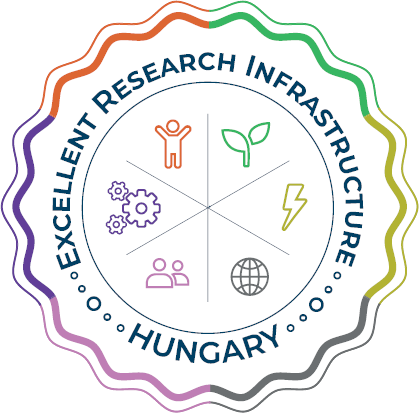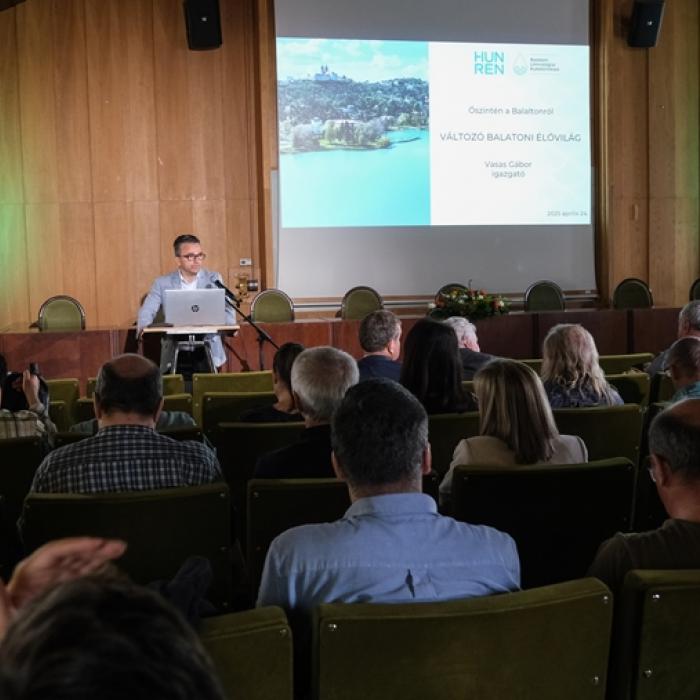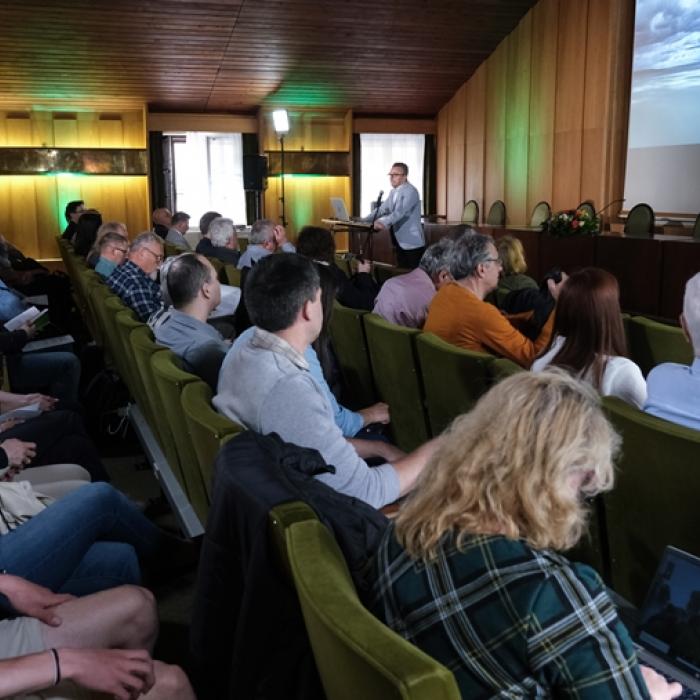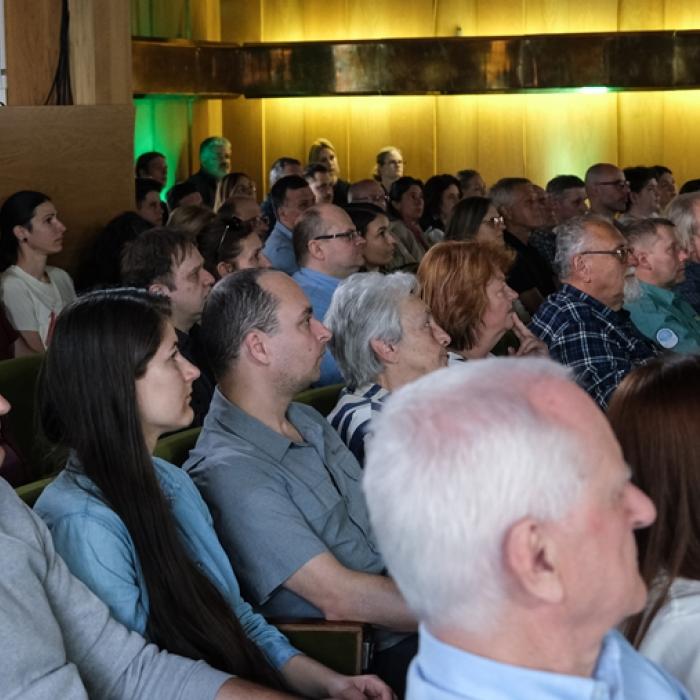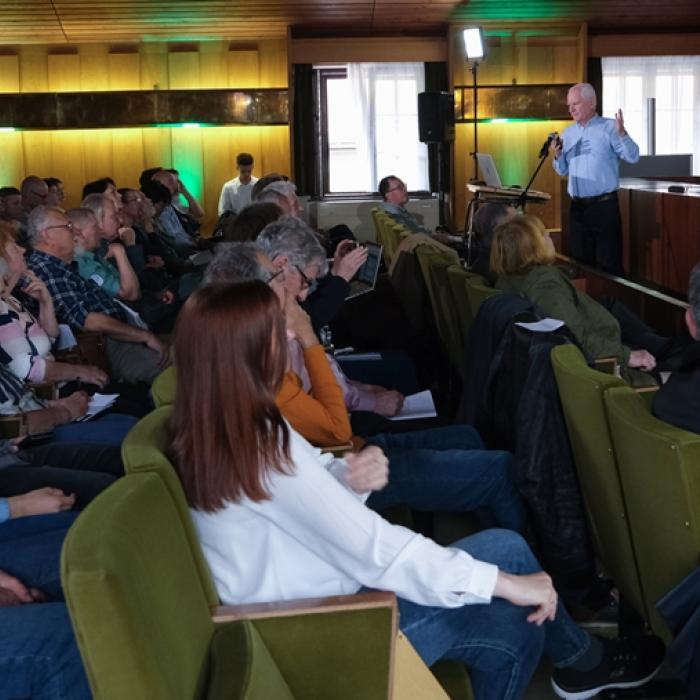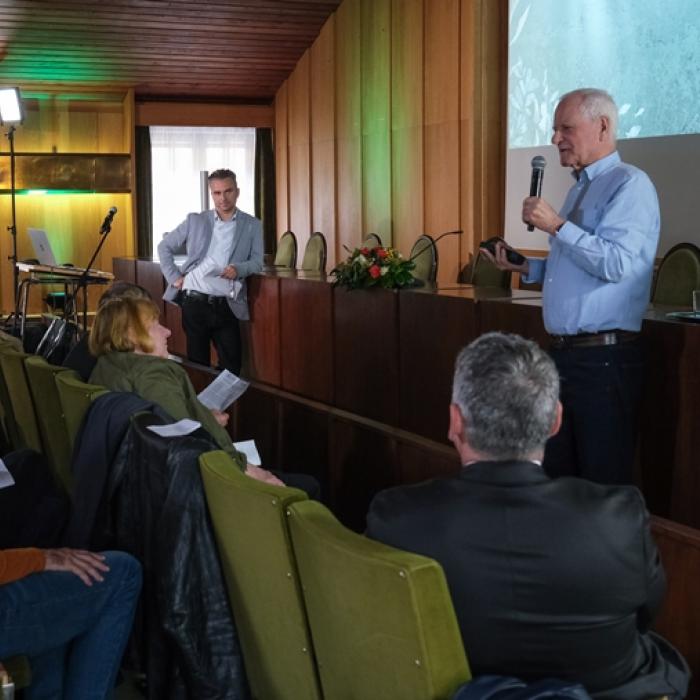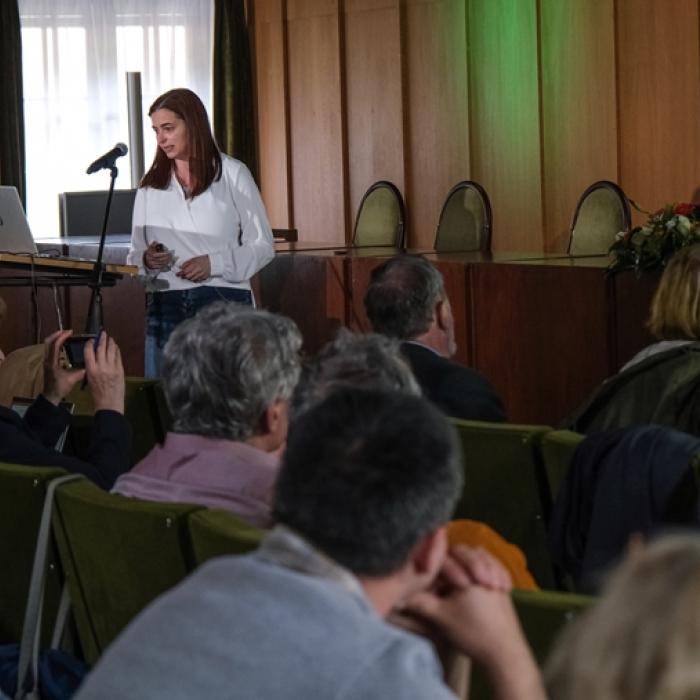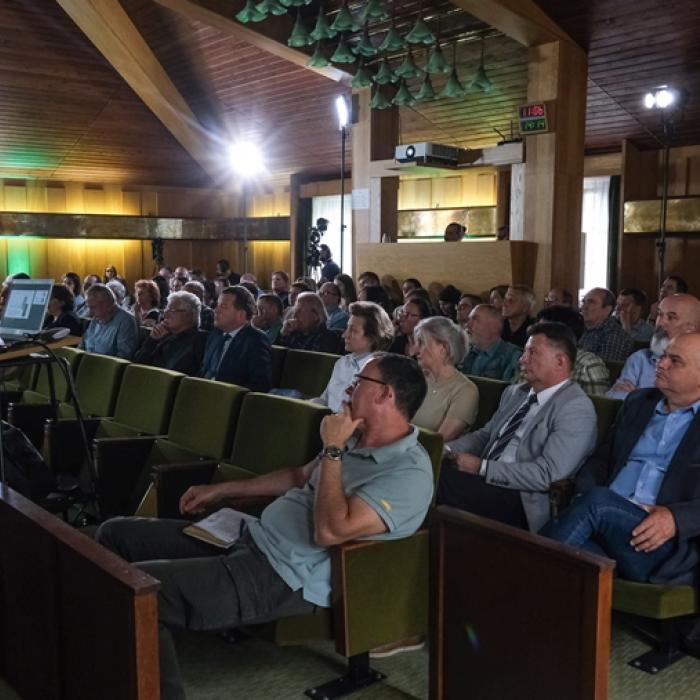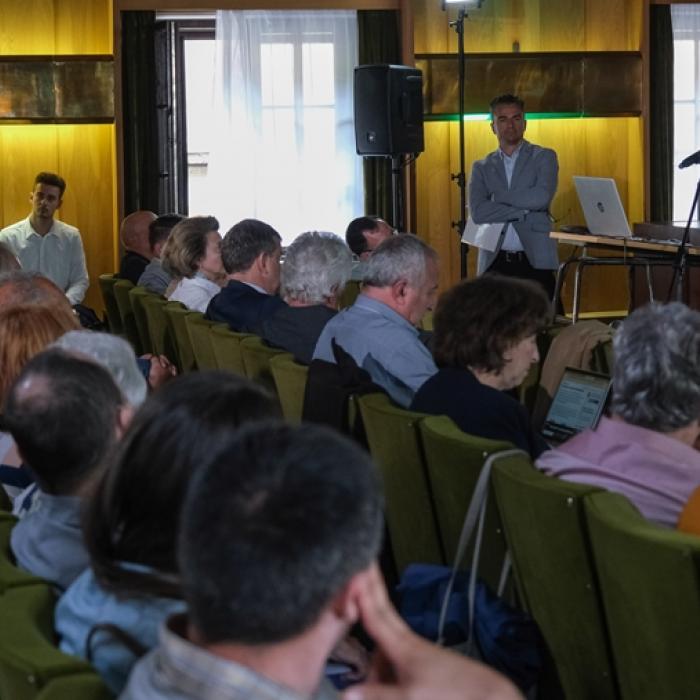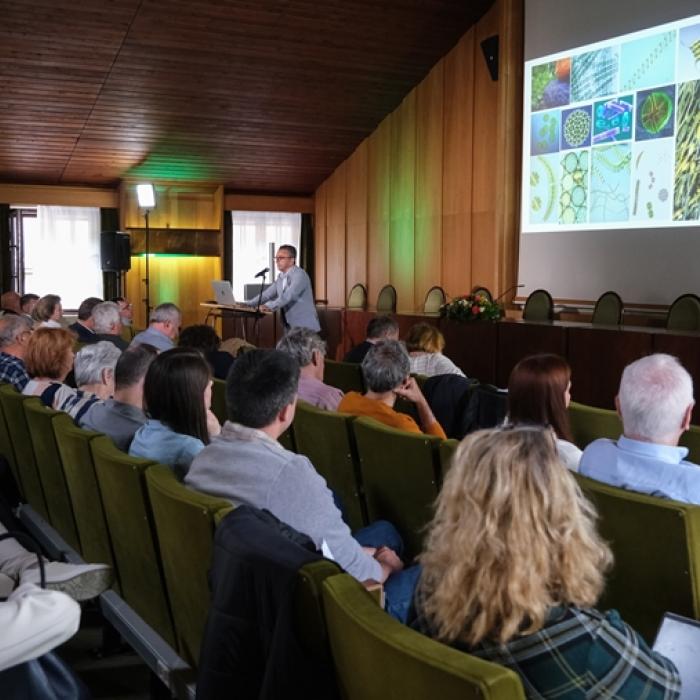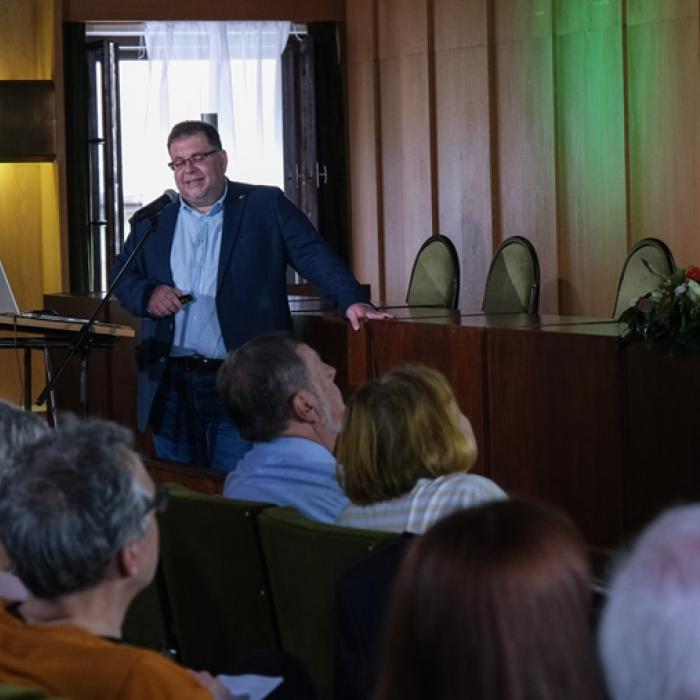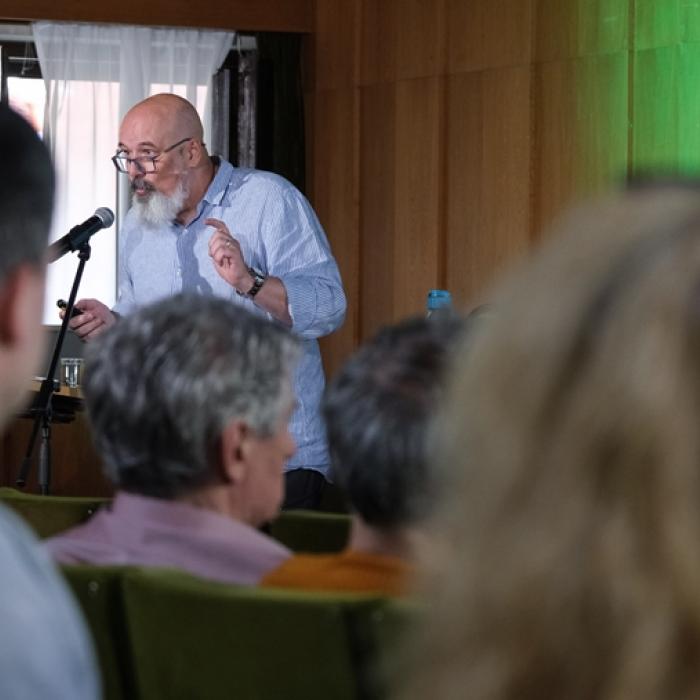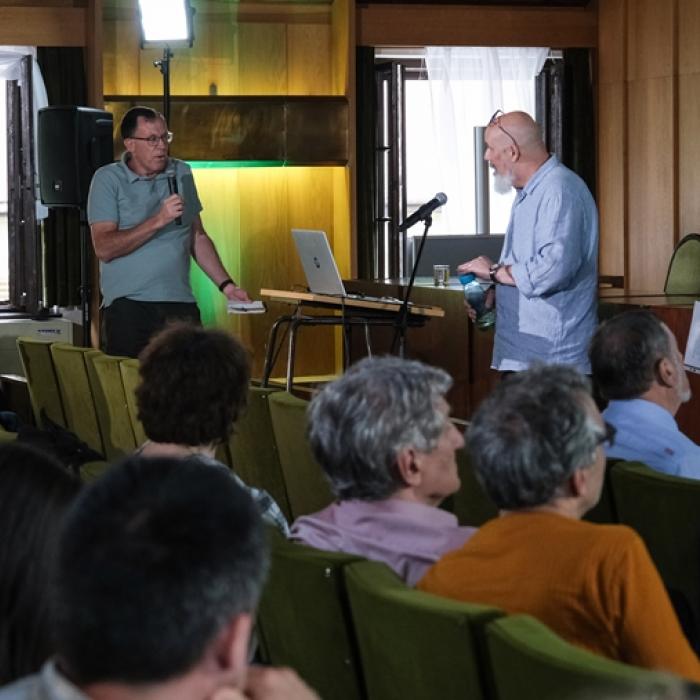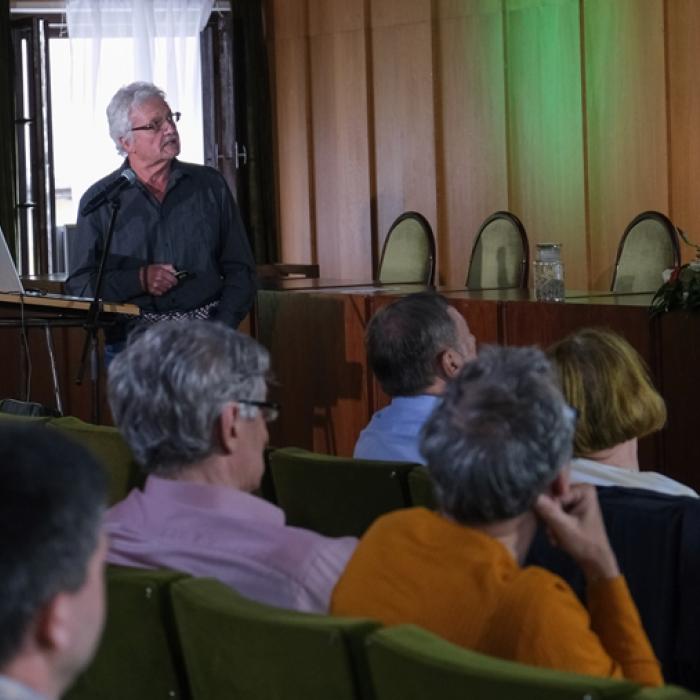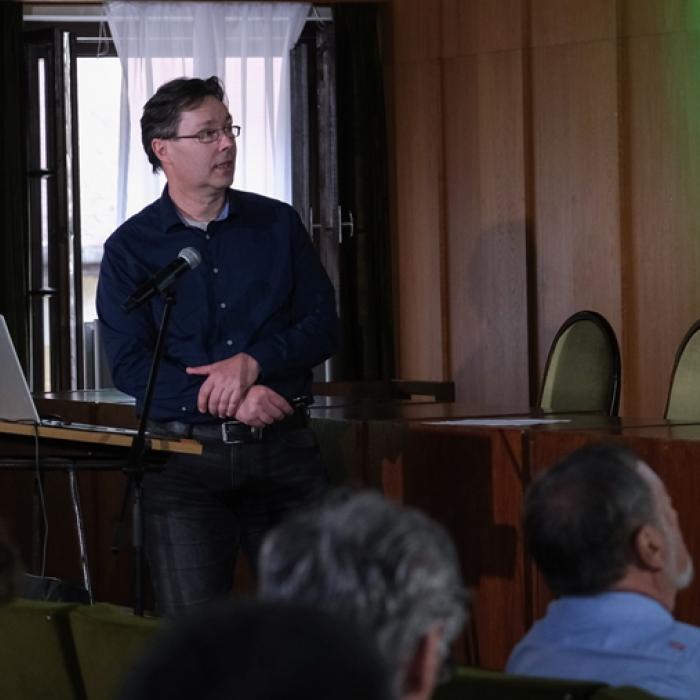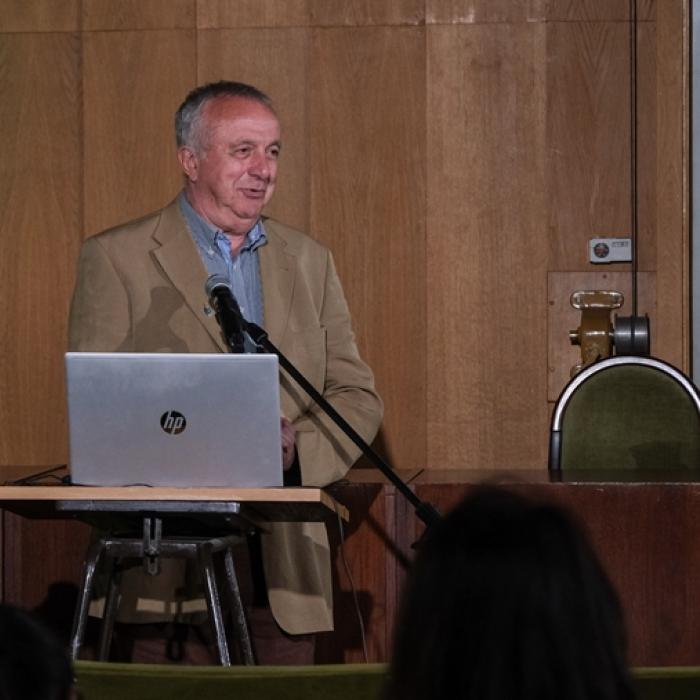On April 24, 2025, in Tihany, the HUN-REN Balaton Limnological Research Institute (HUN-REN BLRI) organized an event under the scientific lecture series "Speaking Honestly About Lake Balaton", focusing on "The Changing (Wild)life of Lake Balaton."
The event’s speakers were all leading expert researchers from HUN-REN BLRI, who have conducted the most extensive studies, investigations, and analyses on Lake Balaton in recent years. Close to one hundred participants of the meeting included professionals involved in urban development, local government, water management, nature conservation, and regional development, as well as researchers and other specialists working on issues related to Lake Balaton.
The lectures highlighted the ecological, physical, and chemical impacts affecting the lake's ecosystem and the significant changes these forces have triggered. Speakers particularly emphasized the risks these changes pose to the lake’s ecological health and its human uses. They warned that if these trends continue, the future maintenance of Lake Balaton’s good ecological status, and the preservation of its natural, social, and economic values, as well as established human uses, cannot be guaranteed.
Centenary Reflections: Honoring Klebelsberg Kuno
As part of the Klebelsberg Kuno Memorial Year, Gábor Vasas, Acting Director of HUN-REN BLKI, commemorated the Institute’s founder, born 150 years ago. He noted that this event marks the first in a series celebrating the centenaries of key milestones in the Tihany research center’s history. Thanks to Klebelsberg’s initiative:
- In 1925, the Balaton Biological Station, the predecessor of today’s institute, began operations in Révfülöp.
- In 1926, the Balaton Limnological Research Institute was formally established by ministerial decree.
- That same year, the foundation stone was laid by Prime Minister István Bethlen, and in 1927, the institute was officially opened by Hungary’s Governor, Miklós Horthy.
The scientific session, made possible through the "Balaton Researchers" project under the Scientific Sponsorship Program, was broadcast online and will be accessible for future audiences.
Key Messages from the Event
The speakers addressed the question: What has changed at Lake Balaton over the past 150 years, and what does the future hold?
All emphasized that the past century and a half has brought enormous changes—and that significant transformations are still underway. Thanks to decades of scientific work at the Institute, many phenomena have been investigated and understood. However, the future risks associated with ongoing changes remain poorly known. Key points raised included:
- Increased human pressure: The number of people using the lake’s ecosystem services has grown dramatically.
- Physical changes: The lake has shrunk; its shoreline has narrowed and altered.
- Land use transformation: The surrounding areas are increasingly covered by buildings, concrete, and asphalt,.
- Climate impacts: Human interventions and global climate change are altering the region's climate and hydrology—leading to hotter, drier conditions.
- Biological shifts: Food webs are changing within the water body, non-native invasive species are displacing indigenous ones, and artificial substances are entering the lake’s ecosystem. Important habitats, like remaining reedbeds are being fragmented.
- Salinization: The lake water’s salt content is rapidly increasing.
Today, Lake Balaton and its wildlife are no longer fully natural but have become partially artificial systems. While the direction of some changes is visible, tipping points and future developments remain unpredictable, posing major risks both to the lake’s biodiversity and to established human uses.
Conclusion: A Call for Precaution and Action
Science strongly recommends that actions regarding Lake Balaton be guided by the precautionary principle. It is essential to strike a balance between human needs and the preservation of the lake’s ecological integrity. Key actions must include:
- halting the expansion of artificial elements,
- protecting remaining natural ecosystems,
- restoring degraded habitats wherever possible.
To uncover global and local anthropogenic changes, extensive and continuous research, comprehensive monitoring, and sophisticated modeling are essential. These efforts are crucial to support future decision-making that benefits the lake rather than harms it.
ABSTRACTS OF PAPERS
Tibor Erős, Doctor of the Hungarian Academy of Sciences (MTA), scientific advisor, and research group leader, delivered a presentation titled "What Will Become of Lake Balaton? Challenges to Water Quality, Ecological Status, and Sustainable Use." In his talk, he described the lake’s urbanization and the associated environmental issues, such as eutrophication, which was drastically intensified in the second half of the 20th century due to agricultural pressures. Although governmental measures at the time improved the situation, new challenges, like the acceleration of climate change, have since emerged. He emphasized that finding compromises between human needs and preserving the lake’s ecological status is key to sustainable lake management.
Lajos Vörös, Professor Emeritus, Doctor of MTA, in his presentation titled "The Wildlife and Environment of Lake Balaton: Tracing 150 Years of Changes," discussed the long-term datasets concerning the lake’s hydrology, climate, water temperature and ice conditions, chemistry, and human-induced changes to the watershed and shoreline. He highlighted that changes in each of these environmental elements have significant impacts on the lake’s biota. Vörös presented and analyzed changes spanning 100–150 years, illustrating with examples how environmental changes have affected, and continue to affect, the communities of living organisms in Lake Balaton.
Boglárka Somogyi, PhD, research group leader and senior research fellow, spoke about the transformations in Lake Balaton’s algal communities. She explained that human activities greatly influence the quantity and composition of algae in the lake. Phosphorus loading favors the dominance of large-bodied algae, such as filamentous nitrogen-fixing cyanobacteria and/or armored dinoflagellates, while decreases in nutrient loading benefit the smallest so-called "picoalgae." Water level fluctuations also have a fundamental impact on algal communities: high water levels favor sediment-dwelling algae over planktonic forms, leading to a potential restructuring of productivity. However, meteorological conditions can greatly override these trends, as demonstrated by events in the Siófok Basin during the summer of 2024.
Gábor Vasas, Doctor of MTA, university department head, and scientific advisor, explored the changes in algal blooms. While algal blooms were rare, small, and localized 60–70 years ago, from the 1960s to the mid-1990s, blooms became widespread across the entire lake. He pointed out that Balaton’s shallow waters, prone to warming and rich in nutrients, promote rapid algal growth. Species responsible for blooms possess unique ecological and physiological strategies, and their toxins and other metabolic products are highly varied. Vasas detailed the risks posed by cyanotoxin production and its ecological and economic consequences, stressing the importance of ongoing research and monitoring.
Zsolt Pirger, PhD, research group leader and senior research fellow, addressed the issue of increasing human-origin pollutants in Lake Balaton, their impacts, and associated risks. He emphasized that contamination of surface and groundwater by human activities is a global concern, as are the resulting environmental health and drinking water supply challenges. Hungary is no exception, and in the case of Balaton—a national strategic asset due to its role as a top tourism and recreational destination—preserving good water quality and biodiversity is of utmost importance. He highlighted emerging threats such as contamination by pharmaceutical residues, illicit drugs, microplastics, UV filter compounds, and agrochemicals.
László G. Tóth, Professor Emeritus and Doctor of MTA, explored the century-long changes in Balaton’s invertebrate fauna. He explained that the coastal zones favor periphytic (surface-dwelling) invertebrates, while the entire lakebed provides habitat for benthic (sediment-dwelling) species. Balaton’s invertebrate community currently consists of 3,380 species, most of which inhabit rocky shores, reedbeds, and sediments. He underlined that the appearance of non-native species has had a significant impact on the composition of these communities.
Viktor Tóth, PhD, senior research fellow, focused on the changes in aquatic and shoreline vegetation of Lake Balaton. Aquatic plants play a crucial role in stabilizing lake ecosystems and maintaining biological diversity, forming the base of the food web and supporting numerous organisms. Today, submerged vegetation along Balaton’s 240 km shoreline is confined to a narrow band, covering only about 1% of the lake’s surface area. Moreover, only about 110 km of shoreline still hosts reedbeds, representing just 2% of the lake's area, severely limiting their ecological functions. Preserving aquatic and riparian vegetation is vital for maintaining the good ecological status of Lake Balaton.
András Specziár, Doctor of MTA and scientific advisor, analyzed the changes in fish populations and fisheries management. He discussed how transformations in natural habitats, changes in water quality, evolving expectations toward fisheries, and the introduction (both intentional and spontaneous) of non-native species have all had major impacts over the past 150–200 years. He provided examples of harmful human interventions, the natural ecosystem’s regenerative capabilities, and management practices that have supported recovery. Specziár also reviewed current and anticipated changes in fish population structure and habitat conditions, summarized the risks associated with recreational fishing, and outlined issues that need careful consideration by fisheries managers and policymakers.
Miklós Persányi, PhD, Candidate of Sciences and Honorary University Professor, in his presentation titled "Anthropocene Balaton: The Artificialization of a Lake," highlighted the profound societal, economic, ecological, physical, and chemical transformations that human activities have triggered in Lake Balaton and its surroundings over the past 150 years. The lake’s basin, shores, waters, landscapes, biodiversity, and settlement patterns have been reshaped according to shifting social and economic priorities. As a result, Balaton’s natural ecosystems have partially evolved into transitional or largely artificial systems, reliant on continuous material, energy, and labor inputs to remain functional. Their long-term stability remains uncertain, therefore, there is an urgency of precaution: halting the expansion of artificial structures, safeguarding the remaining natural ecosystems, and restoring original ecological attributes wherever possible.
X
Between 2021 and 2024, the "Speaking Honestly About Lake Balaton" lecture series covered the following topics:
- "Nutrient Loading in Lake Balaton"
- "The Role, Present, and Future of Balaton’s Reedbeds"
- "Large Lakes in the Era of Climate Change"
- "Human-Origin Pollutants in Lake Balaton"
- "Algal Blooms and Algal Toxins"
(Each event hand sixty to one hundred expert participants. Documents and recordings are available on HUN-REN BLRI’s website.)

